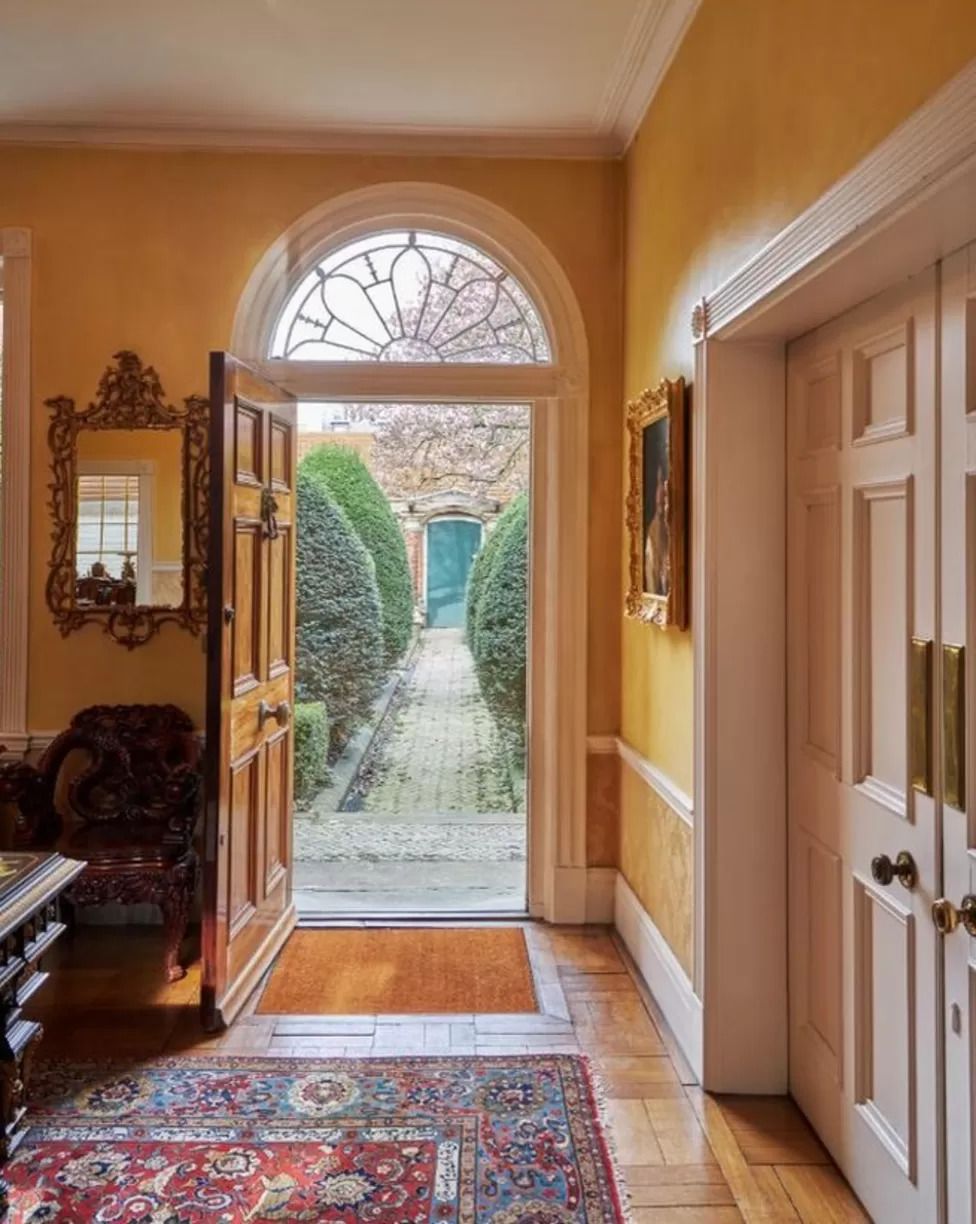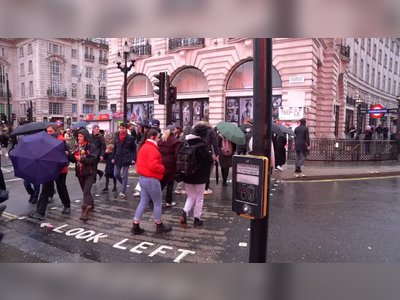
Freddie Mercury: Queen star's friend Mary Austin to auction his personal treasures
The singer built up the collection over 30 years and kept everything at his home in west London.
When he died in 1991, he left both the house and its contents to Mary Austin.
"The collection takes you deeper within the individual and the man I knew," Austin said.
 Mary Austin with Freddie Mercury in 1986
Mary Austin with Freddie Mercury in 1986
Austin is sitting in the huge galleried drawing room, with a portrait by the French painter Tissot on the wall, which was the last work of art Mercury bought, a month before he died.
It was hung so Mercury could see it from the sofa. It is estimated to fetch between £400,000-600,000.
"You see the spectrum of his taste," said Austin, speaking exclusively to the BBC.
"It's a very intelligent, sophisticated collection."
 The last work of art Mercury bought was this portrait by James Jacques Tissot (estimate £400,000-600,000)
The last work of art Mercury bought was this portrait by James Jacques Tissot (estimate £400,000-600,000)
A highlight of the sale will be Freddie Mercury's handwritten working lyrics to one of Queen's greatest anthems, We Are The Champions, including harmonies and chords, written across nine pages. They are expected to sell for £200,000-300,000.
The unseen working lyrics to Killer Queen, written on a single sheet of paper in black Biro in 1974, are expected to fetch £50,000-70,000.
Austin said the lyrics were particularly difficult to part with, because they show "for me, the most beautiful side" of the man she was devoted to.
"You're looking at the process of the artist, of work in progress," she added. "The crossings out, the rethinking, the reformatting."
Nineteen-year-old Austin had been out on a date with Queen's guitarist Brian May when she first met Mercury in 1970.
 Queen in 1973, left to right: John Deacon, Freddie Mercury, Roger Taylor and Brian May
Queen in 1973, left to right: John Deacon, Freddie Mercury, Roger Taylor and Brian May
They moved in together and remained close even after he told her he was gay. She cared for him as he became weaker after contracting an Aids-related illness.
Mercury once said of Austin: "I don't have that many people to turn to. And the only one, if we're talking about it, is Mary."
Naturally shy and self-effacing, Austin has rarely spoken in public since Mercury died.
But he is still a huge part of her life. "I miss the fun, the humour, his warmth, his energy," she reflects.
 Mercury lived in Garden Lodge in Kensington
Mercury lived in Garden Lodge in Kensington
The house, Garden Lodge, in Kensington, has remained almost entirely as Mercury left it for three decades, complete with the antique furniture, artworks and glass he collected and the sumptuous fabrics he loved.
There are prints by Matisse and Chagall hung on the iridescent buttercup-yellow gloss-painted walls of the dining room and a portrait by Picasso which was displayed above the breakfast table in the kitchen.
 In Mercury's kitchen hung Pablo Picasso's portrait of his wife (estimate £50,000 - 70,000)
In Mercury's kitchen hung Pablo Picasso's portrait of his wife (estimate £50,000 - 70,000)
"I like to be surrounded by splendid things," he once said. "I want to lead the Victorian life, surrounded by exquisite clutter."
But now Austin has decided to sell the collection, "because I need to put my affairs in order," she explains.
Austin, 72, adds: "The time has come for me to take the difficult decision to close this very special chapter in my life."
And beyond a few "personal gifts" and photographs of the pair together, Mary Austin is selling everything.
"I decided that it wouldn't be appropriate for me to keep things back. If I was going to sell, I had to be brave and sell the lot."
 Freddie Mercury's crown, a replica of St Edward's Crown worn by King Charles at the Coronation (estimate £60,000-80,000)
Freddie Mercury's crown, a replica of St Edward's Crown worn by King Charles at the Coronation (estimate £60,000-80,000)
So Mercury's stage costumes will be sold, including sequinned catsuits, glittered shoes and the fake fur, red velvet and rhinestones crown and matching cloak he wore during his last tour with Queen in the 1980s.
He kept them in a mirrored-lined dressing room.
 It is thought Freddie Mercury wrote and recorded Crazy Little Thing
Called Love on this 1975 Martin D-35 Acoustic guitar (estimate
£30,000-50,000)
It is thought Freddie Mercury wrote and recorded Crazy Little Thing
Called Love on this 1975 Martin D-35 Acoustic guitar (estimate
£30,000-50,000)
There are personal items in the sale too. The telephone he kept beside his bed, a specially commissioned marble bar and matching bar stools, monogrammed cocktail napkins embroidered with a green F and a small silver moustache comb.
There is also his favourite waistcoat, worn in his final video These are the Days of Our Lives, in 1991.
The silk panels of red, green and purple are each hand-painted with one of Mercury's cats, Delilah, Goliath, Oscar, Lily, Romeo and Miko.
 Freddie Mercury's favourite waistcoat (estimated to fetch £5,000-7,000)
Freddie Mercury's favourite waistcoat (estimated to fetch £5,000-7,000)
All 1,500 items will go on display at Sotheby's in London in the summer in a sequence of specially designed galleries, devoted to a different aspect of Mercury's life, before they are sold in September.
The auction is expected to fetch in excess of £6m and some of the proceeds will be donated to charity.










